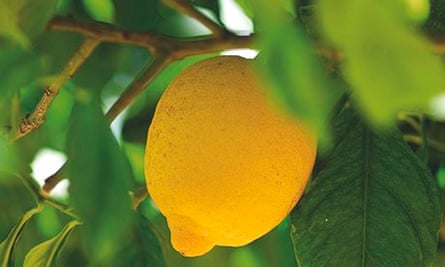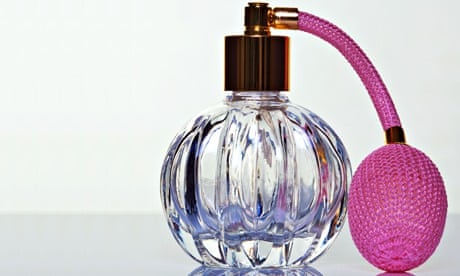The perfume industry is facing a major problem: maintaining constant levels of quality is crucial, but it is increasingly difficult to obtain a regular supply of all the necessary natural ingredients. Essential oils such as jasmine, rose, vetiver, ilang-ilang, iris, vanilla, sandalwood or lavender cannot be synthesised in the laboratory. But supplies are dwindling and need to be protected, in some cases by the perfume industry itself.
In 1987, for example, Chanel made an agreement to buy all the jasmine flowers produced by the Mul family, which has been the main source of the flowers in France for five generations. Jacques Polge, Chanel's top "nose" since 1978, made the decision when developers started trying to buy up land around Grasse, where the Muls cultivate three hectares of the precious plant.
The crop of fragrant white flowers – between 10 and 15 tonnes a year – is almost entirely used in Chanel No 5, the perfume created by Ernest Beaux in 1921 and now the world's biggest-selling fragrance. The smallest bottle (30ml) contains the equivalent of 1,000 buds. They are hand-picked in the morning to retain as much fragrance as possible, from August to October – and processed the same day.
The partnership between Chanel and the Mul family has since been extended to include Provence rose, iris, tuberose and an old variety of geranium. The factory located nearby is both a laboratory and a processing plant.
At Guerlain, a subsidiary of LVMH, the head perfumier Thierry Wasser was also responsible for starting jasmine production again in Calabria, Italy. "I spend about a quarter of my time in the fields, talking to growers," he says. His quest for new fragrances has taken him as far as the mountains near Kashan, Iran, in search of the Damascus rose, still grown there using traditional methods. It features in a new eau de parfum.
His work takes him to Tunisia too, to supervise the harvest of orange blossom, of which Guerlain distils 100 tonnes a year for its own use. Here too he sources bergamot, a favourite ingredient in his preparations.
Wasser has set aside a bottle of rose oil, which he considers the most remarkable of last year's harvest. It is the result of a perfect balance between dew and sunlight. Much as with the best wines, the raw materials of perfume are always changing, affected by the soil, sunlight, rainfall and temperature. Their price varies too, depending on crop yields.
None of the big three – Chanel, Guerlain and L'Oréal – have any immediate plans to invest more extensively in growing. They see raising the trees and flowers on which they depend for essential oils as a separate business.
But François Demachy, the nose at Christian Dior Parfums and head of the perfumes division at LVMH, reckons diversification into primary production as a likely move for the industry to make. He says he is "considering [investing] further upstream" in the long term. He is certainly concerned about "availability problems" for certain ingredients, which has prompted him to increase the range of sources for some flowers and even to seal an agreement with a Sri Lankan producer of sandalwood – a rare species protected by the Convention on International Trade in Endangered Species of Wild Fauna and Flora (Cites).
"What was Jean-Paul [Guerlain] thinking of when he put so much sandalwood in Samsara?" his successor Wasser jokes. The price of the essential oil has rocketed since 1989 when the perfume was launched.
Each bottle of perfume is made from raw materials whose quality and cost are sensitive to changes in agriculture, politics, natural disasters, climate and disease. All of which can be a major headache for perfumers.
"Rural flight has substantially reduced these micromarkets all over the world. Farmers are tempted to switch to cereals or oil-producing plants, which often pay much better than flowers. The growers who work for the perfume industry and their pickers do not earn a great deal," says Jean-Pierre Coutauchaud, head of speciality raw materials purchasing at L'Oréal. In the perfumes produced by L'Oréal (Trésor, Lancôme, Armani), natural materials only account for 20% of ingredients, the rest being artificial.

"In Indonesia, the Chinese who used to farm the patchouli fields have been persecuted, forcing them to give up their crops, which in turn led to an incredible price rise," Wasser explains. For several months after the earthquake that devastated Haiti in January 2010 vetiver exports stopped, he adds. On the other hand, the Arab spring in 2011 did not affect the supply of jasmine, despite it being mainly sourced from Tunisia and Egypt.
Nearer to home, the lavender fields of Provence have been severely damaged in recent years by insect-borne bacteria.
"We now keep reserves of strategic raw materials – such as vetiver, vanilla and lavender – selected on the basis of three criteria: they can't be synthesised, only come from a single geographical source and are needed in large quantities," says a spokesperson at Givaudan, which manufactures perfume for several brands.
Givaudan, based in Vernier, Switzerland, is taking steps to mitigate shortages. It has launched schemes to protect and sustain sources of endangered raw materials. It has helped tonka bean growers in Venezuela, restarted sandalwood production in Australia, and helped to improve the quality of benzoin resin in Laos and ilang-ilang in the Comoros islands.
Haiti produces half the world's supply of vetiver. Its roots yield an essential oil with a mysterious dry fragrance akin to smoked wood, which Haitians call the "essence of tranquillity". In 2012 Givaudan started working with Agri Supply, the main producer of the oil. Its refurbished vetiver distillery is now the largest in the world. Some 160 farmers in three villages in the Cayes district have formed a co-operative and negotiated a guaranteed minimum price. They also receive technical support from the Swiss firm.
This article appeared in Guardian Weekly, which incorporates material from Le Monde

Comments (…)
Sign in or create your Guardian account to join the discussion